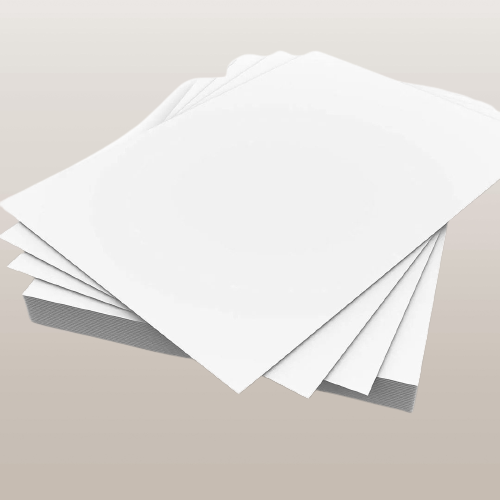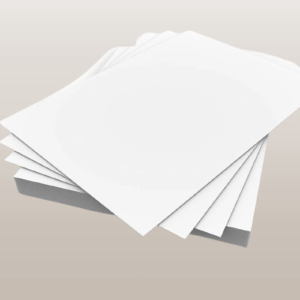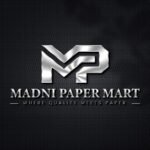Step by step instructions to Pick the Right Paper for Offset Printing Books

Maybe you believe that in the computerised age, print might go the method of VHS tapes and landline phones? However, assuming you do, you’re completely off-base. Similarly that structures actually have steps even after the innovation of the lift, individuals anticipate the theatre arrival of a film in spite of the many web-based features, and home cooking stays the best option for most families even with the expansion of microwaveable prepared feasts, so printed books, magazines, and showcasing materials are setting down deep roots.
At Madni Paper, we’ve been effective in the counterbalanced printing industry for over a fourth of a hundred years and our business keeps on extending. Interest for excellent print is as high as could be expected. However long you have printed words, pictures, and thoughts you need to keep, make open, sell, or part with, there will be a requirement for printers such as ourselves that can apply ink to paper to make delightful, compelling, and cost-proficient books, magazines, pamphlets, inventories, flyers, and that’s only the tip of the iceberg.
As a global offset printer, we work with corporate clients, non-benefits, and free creatives on a scope of undertakings consistently. Also, beside the ink, the one thing every one of these shares for all intents and purposes is paper. As an organisation, we’re focused on ceaselessly exploring and working on our supportability and harmless ecosystem certifications. All our top notch paper and card stocks, for instance, are FSC-affirmed from supportable sources and we use soy-based inks which are innocuous to the climate and the water supply.
Picking the right paper for the gig close by is a significant choice to make, essential to the progress of your print project. We have personal information and comprehension of paper, from source materials , for example, wood mash, cloth, and China mud to the assembling and covering processes and, obviously, printing and wrapping up. In this way, the simplest and most ideal way to pick the ideal paper or papers for your book, magazine, leaflet, or index, is to converse with us. You can reach out through the phone, email, Skype, our web talk, or our helpful internet based contact structure.
However, to give you a plan to get everything rolling, we should check out at the essentials of paper decisions for a scope of famous ventures. Contingent on what your last printed item needs to seem to be book pages, magazine pages, leaflets or inventories various papers are more qualified than others for each work. There are a few variables to consider while picking the right paper for any printing position. In the remainder of this article, we’ll investigate the absolute most significant insights regarding offset printing books, magazines, pamphlets and lists utilising different papers.
Figuring out offset printing
Before we jump into the subtleties of the various papers utilised in offset printing, it’s vital to comprehend how balanced printing functions. Top notch prints, reasonable costs, more choices, quick circle back, and full control of the printing system are only a couple of the benefits of balanced printing.

Counterbalance printing is a customary printing method that was broadly utilised in papers before the time of PC-to-plate (CTP) and computerised printing. On account of mechanical advances, offset printing is still broadly utilised in printing books, magazines, and different items. Dissimilar to computerised printing, offset printing is a cycle that moves ink from a plate to a piece of paper through an elastic chamber. Subsequently, the print is “offset” from the metal sheet to the paper. There are three fundamental parts to the printing system:
- The initial step is to make a metal plate that has the text and pictures that you need to print
- The subsequent stage is to ink the plate
- Finally, we run the plates through an offset print machine to move the ink onto paper
The primary sorts of paper utilised in offset printing are uncoated, gleam covered, and matte-covered. Uncoated paper has a harsher, more regular, non-polished finish. We regularly involved it in manuals and books. Matte-covered paper has a smooth glossy silk finish and is utilised in handouts and magazines. Gleam paper has a serious shine finish and is utilised for banners, indexes, and fronts, everything being equal.
Paper for books
The best paper for offset printing books relies upon the kind of book you’re printing. Thus, a collection class novel without inside delineations might have uncoated “wood free” paper for the text and a sparkle or matte covered paper for the full-variety, outlined cover. Most different books like footstool books, cookbooks, craftsmanship and photography books, and so on, use paper which generally falls into the “covered paper” class in any event, for the inside pages.
Covered paper is intended for steadfast, top notch picture multiplication and text. It’s heavier (or thicker) and each sheet has a covering that takes into consideration rich, lively tones. The covered paper likewise has a pleasant, smooth completion that makes it ideal for making delightful book pages. Contingent upon the particular kind of covered paper you pick and different augmentations, similar to fibre or soy content, the paper can be ideally suited for book covers and residue coats, as well.
Paper for magazines
The paper utilised in magazines is unique in relation to the paper utilised in books, as a rule concerning the weight and thickness. Similarly as with most books, magazines utilise two sorts of paper: for the cover and within pages. Within pages are in many cases uncoated paper however may likewise be covered paper contingent upon the style and content; for instance, a bulletin or educational magazine might have its inside pages imprinted on uncoated paper, while a design, inside embellishment or way of life magazine would in all likelihood be imprinted on shine covered paper.
The uncoated paper is more permeable. It’s perfect for essential message printing yet can leave photos and full-variety delineations looking somewhat dull and “fudged”. The covered papers are perfect for magazines that have loads of pictures, promotions and other substance with heaps of varieties and photographs, as the pages will be more splendid and more dynamic. We don’t print within pages of numerous magazines in full tone, so uncoated or matte-covered paper is a brilliant decision for this side of the distribution. We utilise covered paper for magazine covers since it has a pleasant smooth completion that is both eye-getting and strong.
Paper for handouts/flyers
The papers utilised for printing leaflets and flyers are ordinarily lighter and more affordable than the papers utilised for printing books and magazines. This is on the grounds that pamphlets and flyers needn’t bother with the very hard core attributes that books and magazines do as they’re not planned to endure. Leaflet and flyer paper is many times uncoated or semi-covered, as the heavier paper is generally not a decent decision here. The thicker paper is more costly to create, and the additional mass can make collapsing the paper in the correct manner troublesome, which gives issues the most widely recognized sorts of collapsed handout or seat sewed pamphlets.
Paper for indexes
Index paper resembles the paper used for books. One contrast between inventory endlessly utilised for books is the thickness of the paper. Inventory paper is frequently heavier, sparkle covered stock, which can assist it with confronting the extra mileage related with being sent out, persevering through continued perusing, and keeps the visual substance which necessities fresh, great variety multiplication — looking new and lively.
Key focus point
At the point when it comes time to pick paper for offset printing books, magazines, handouts, and indexes, you’ll need to think about the kind of paper and its thickness. The heavier the paper, the more sturdy it will be. Covered paper is best for books, magazines, and inventories as it has a smooth, thick surface that can truly make pictures and text pop. Uncoated paper is best for most magazines inside pages, as the cover will safeguard it and is reasonable for broad areas of printed text instead of pictures and photos. Numerous distributions need two sorts of paper, one for the cover and one for the inside pages.
Converse with us!
The decision of paper influences the quality and effect of the completed printed item, the plan cycle, and the cost. At the point when you have a print project as a main priority, the best thing to do is to converse with us first.you contact us directly mobile number# 0300 8418750 or WatsApp easily and visit our Website Madni Paper Mart.We are largest Paper Importer and stockist of pakistan. We have all kind of paper products you can visit our site for furthermore.
